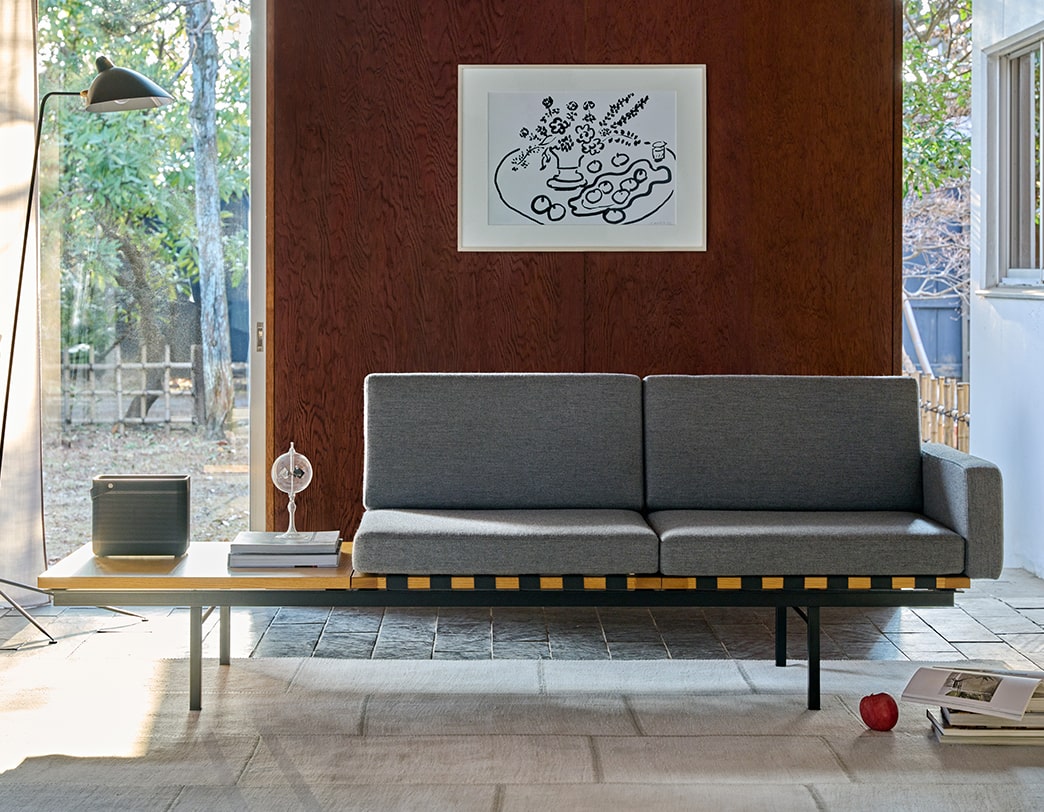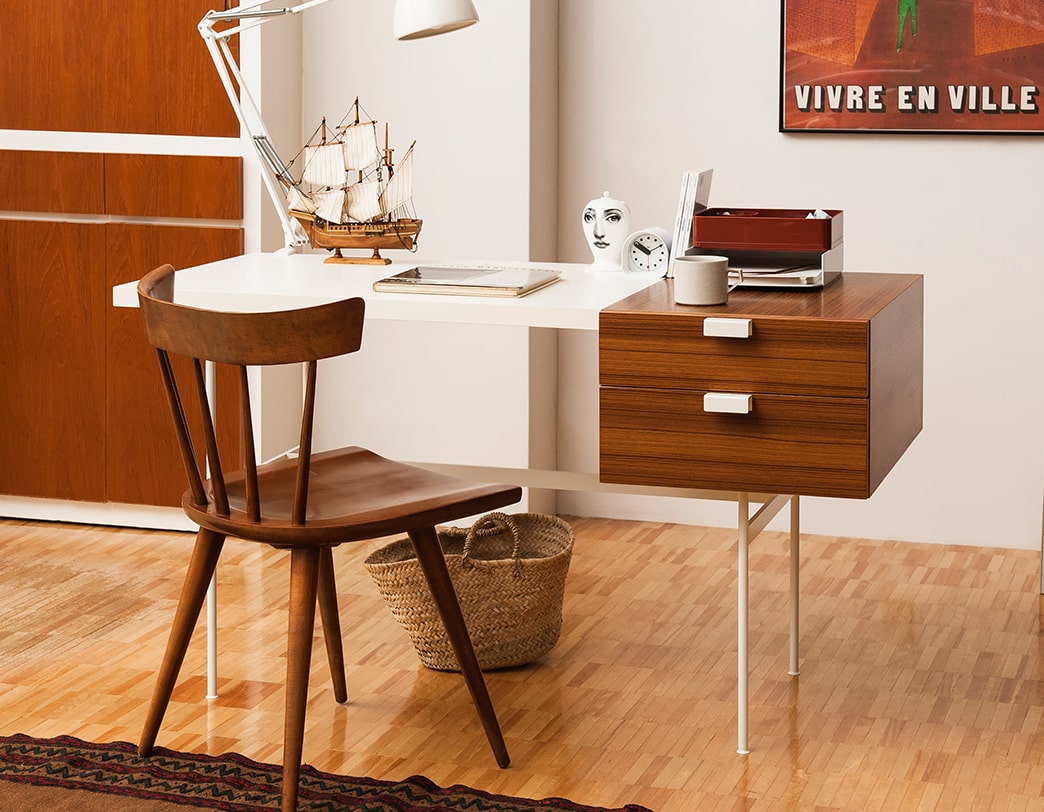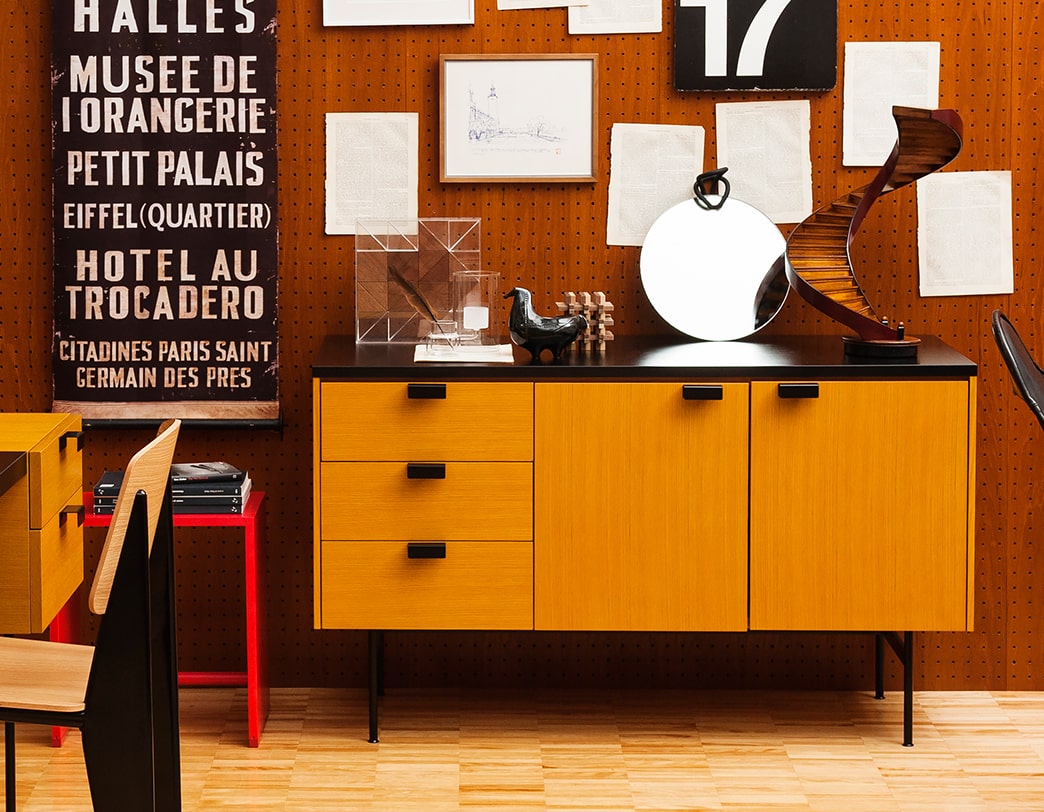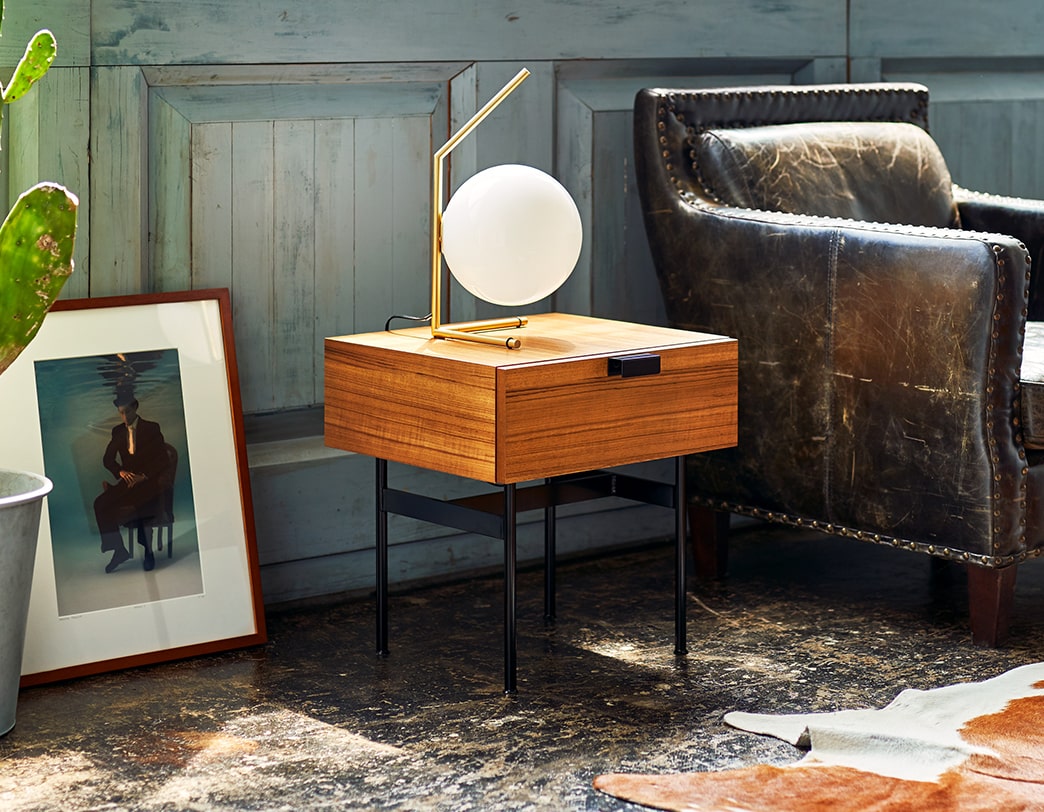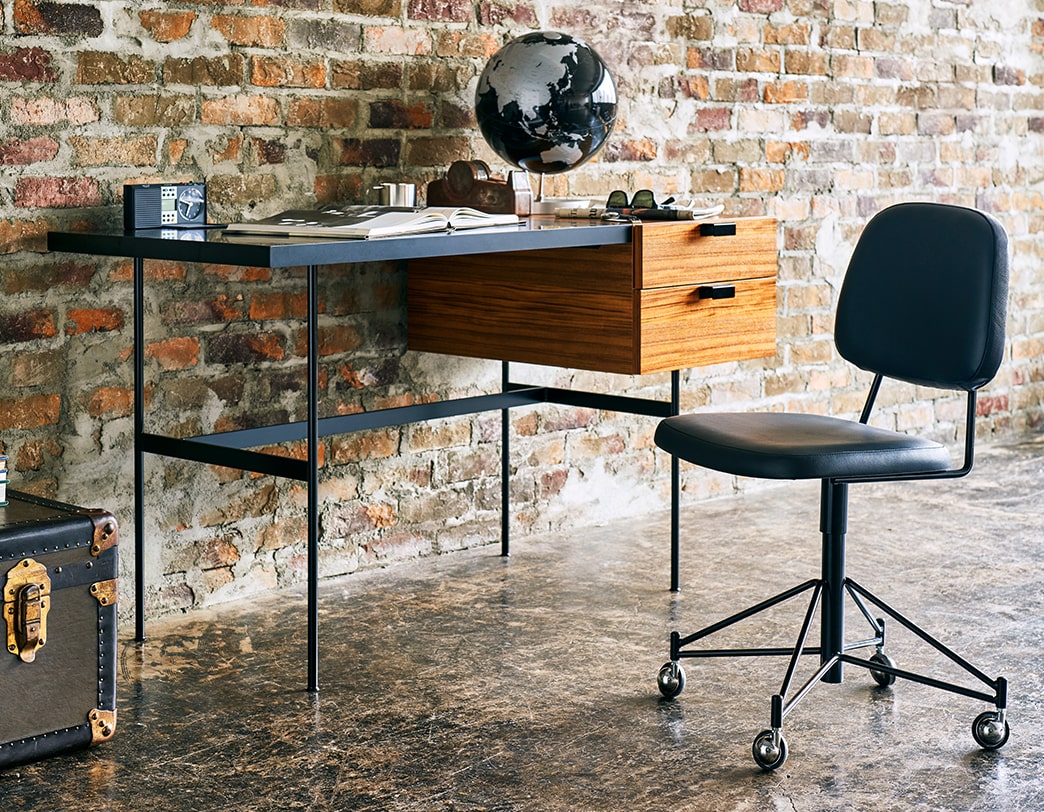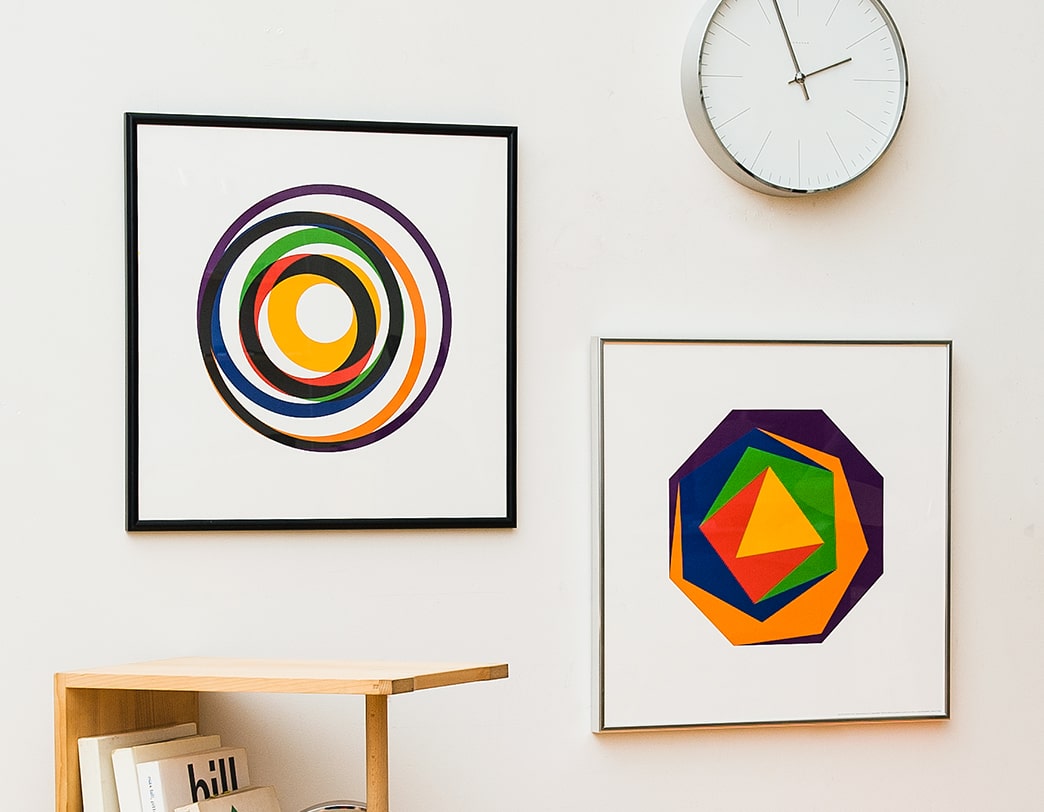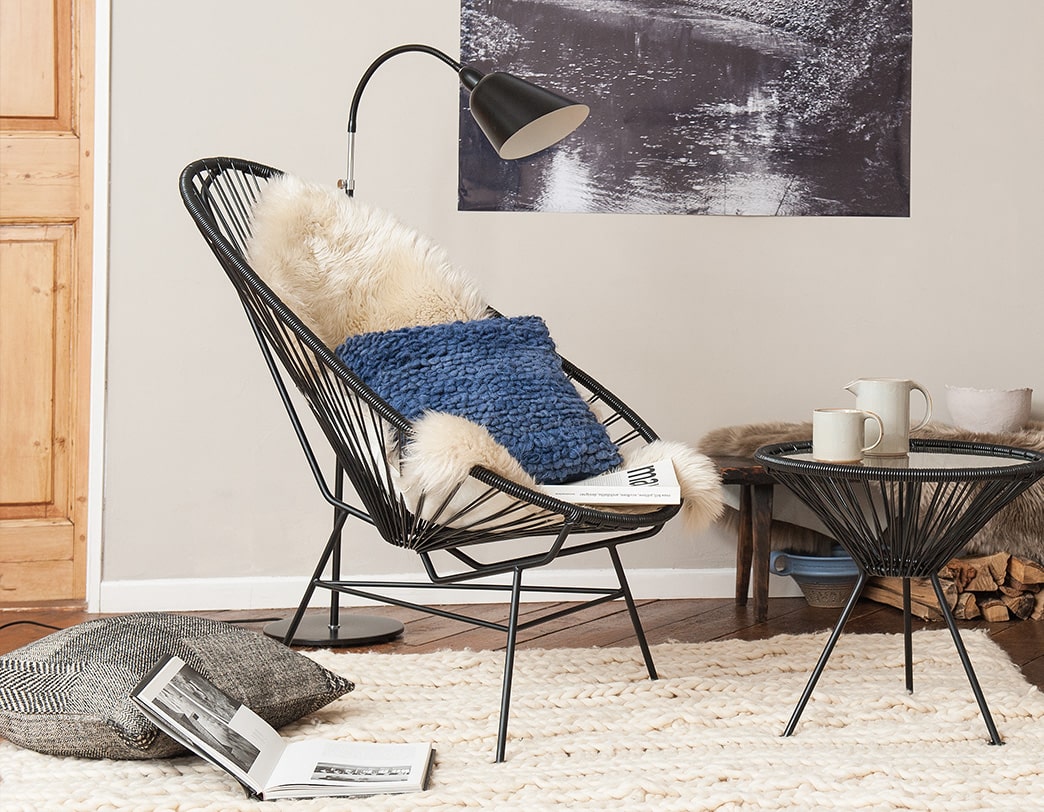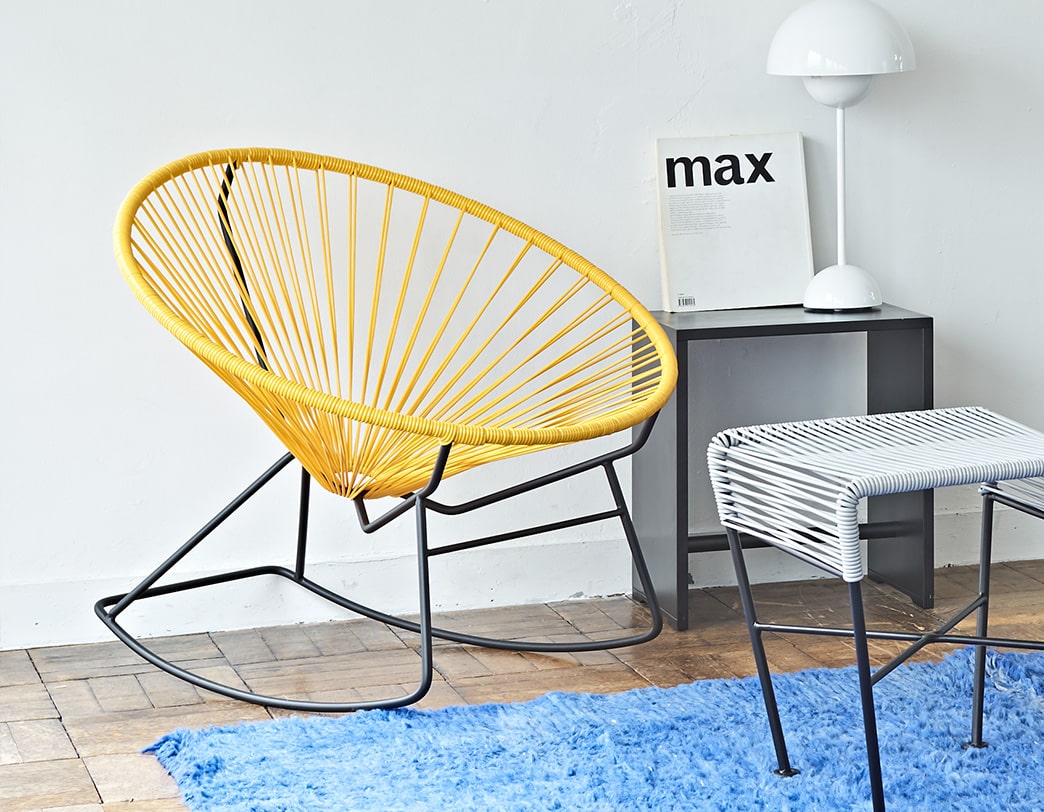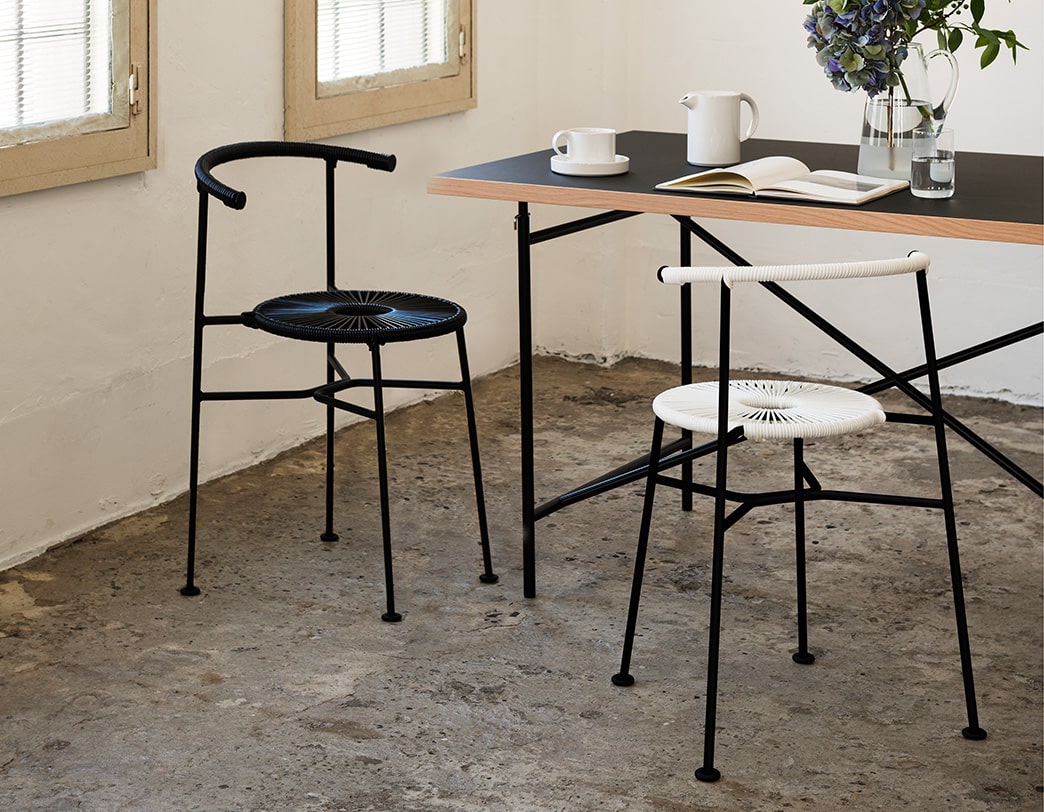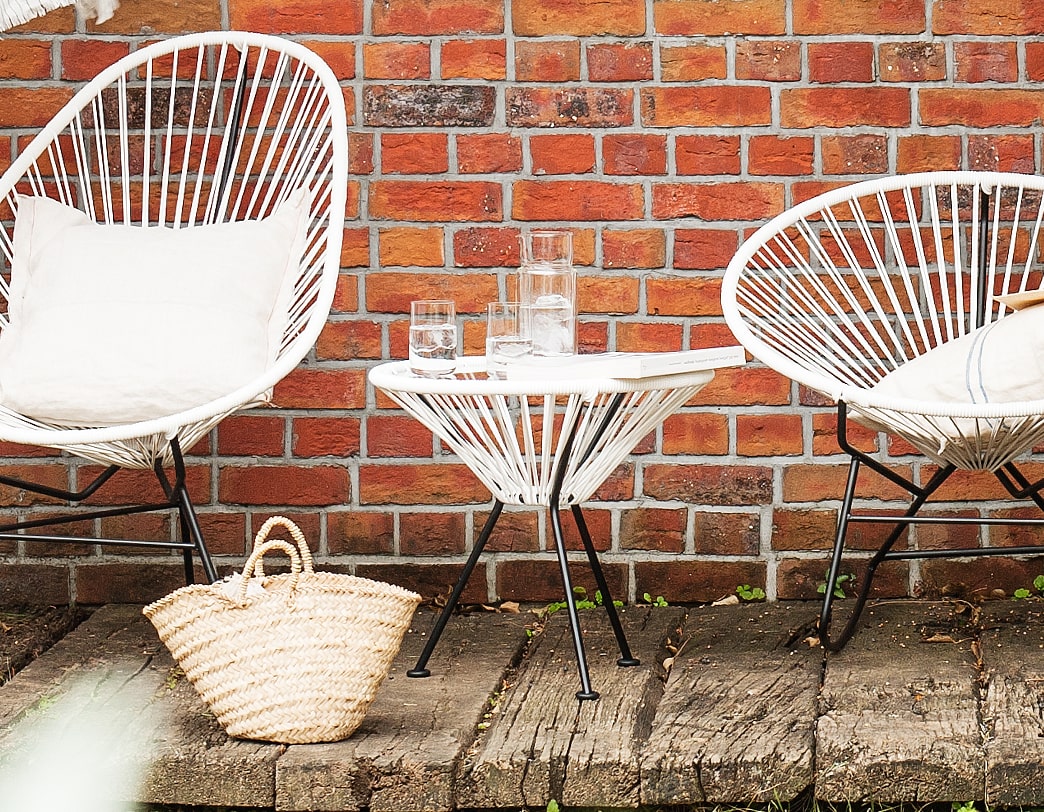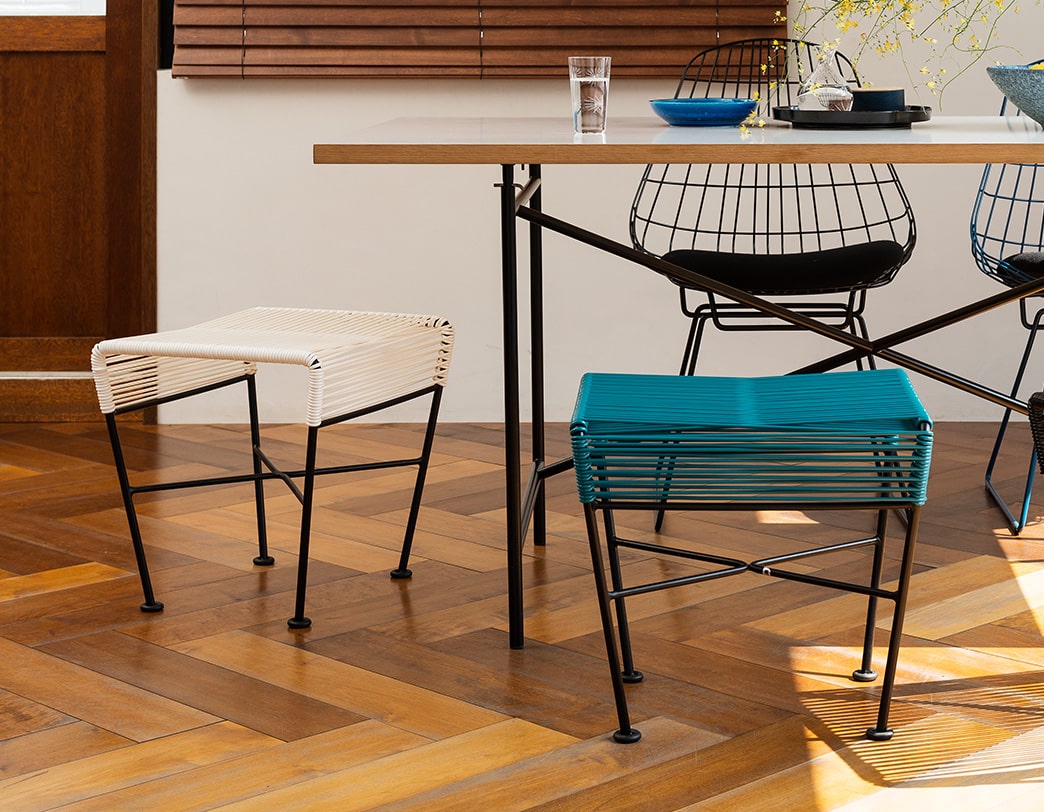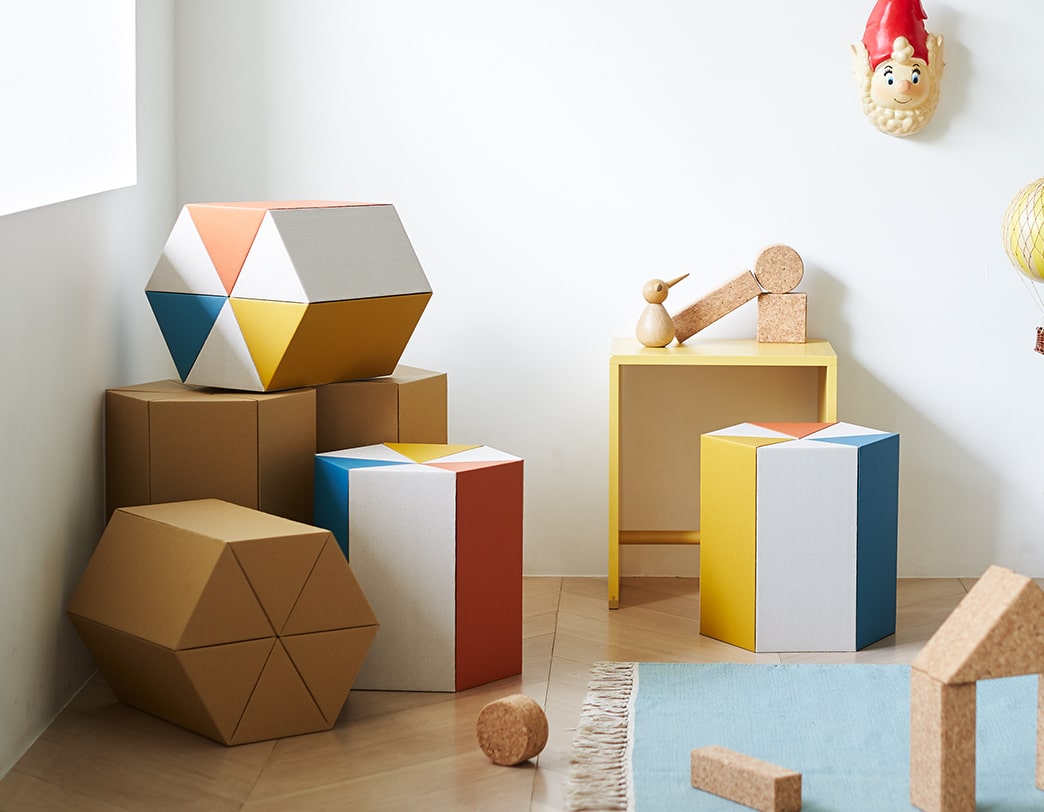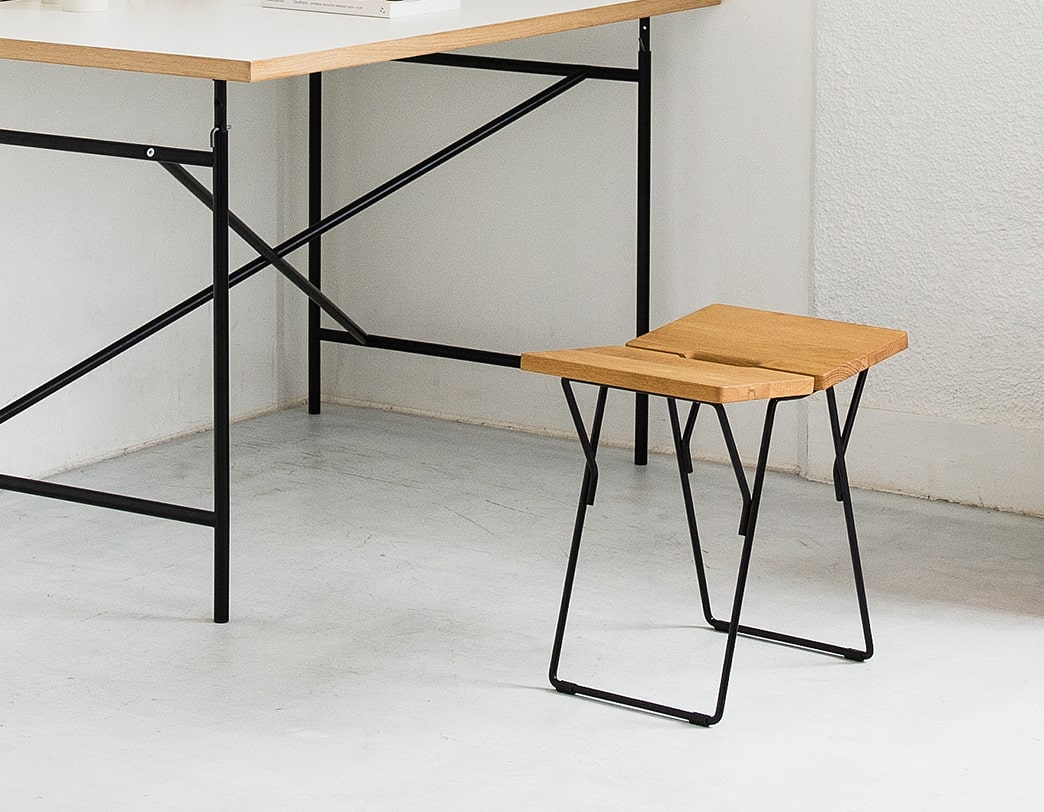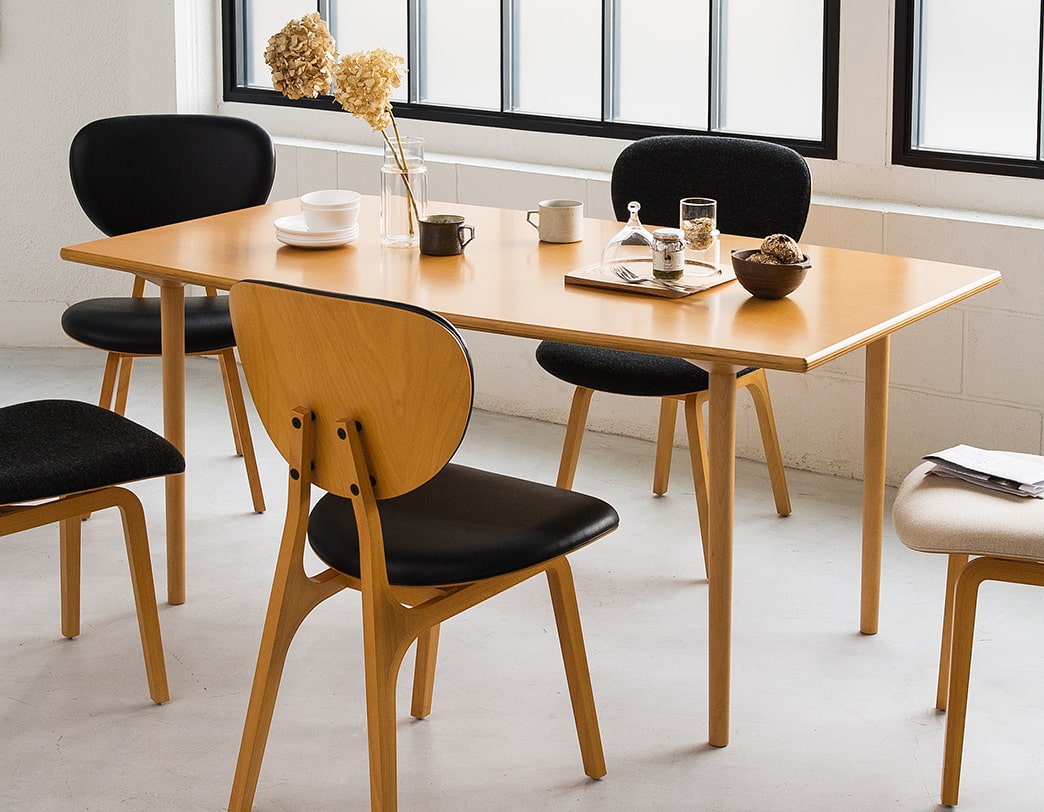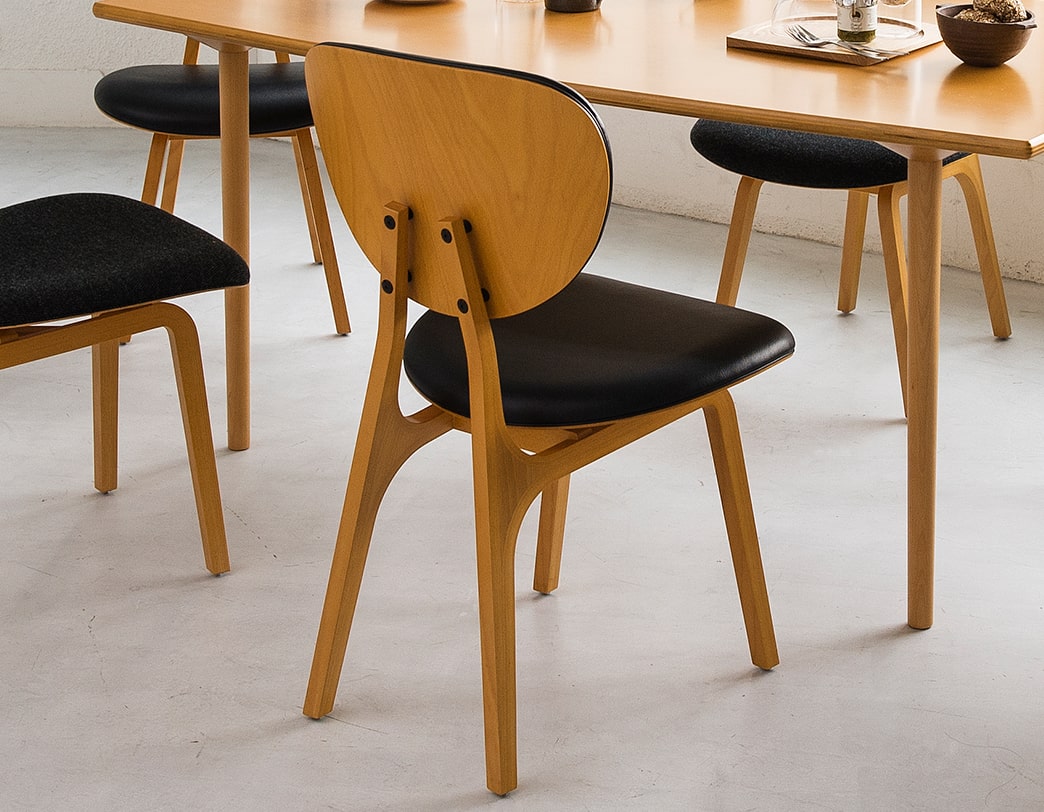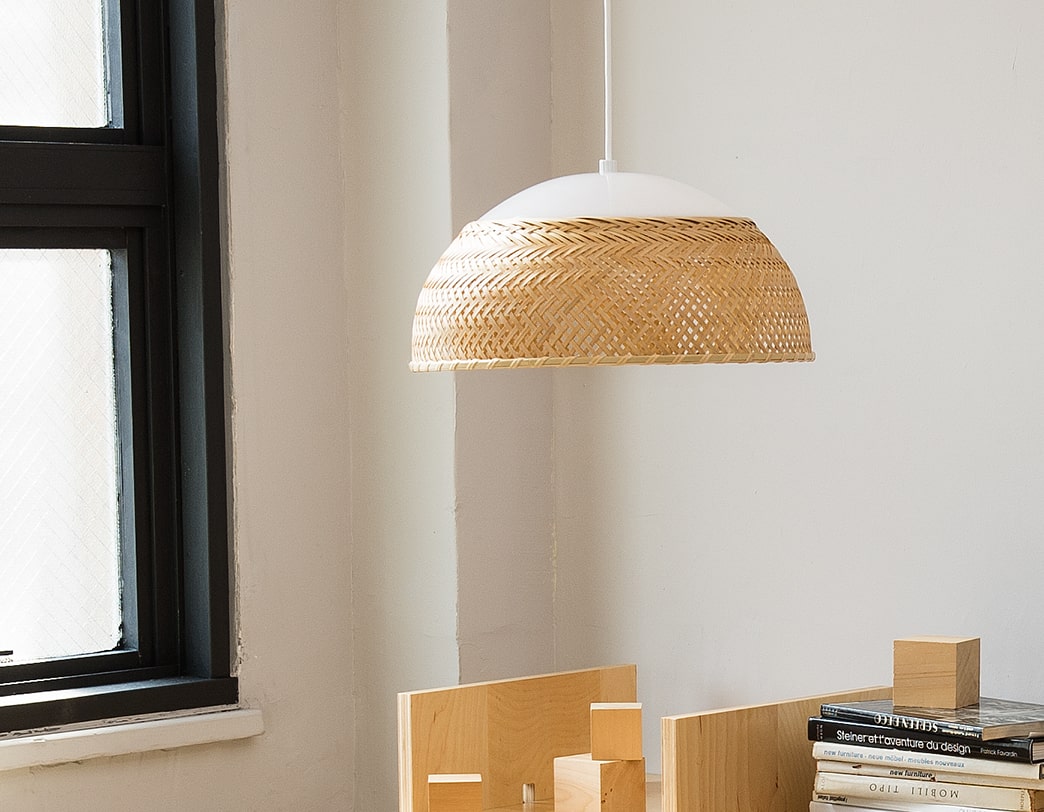
METROCS is an interior products brand selling masterpiece design items with a long history originating in Japan and Europe. By handling items that do not become outdated due to the flow of time but rather increase their presence with each passing year, METROCS supports evolution of the lifestyles of a broad spectrum of users, transcending both generations and gender. Selecting future masterpieces from among a range of outstanding products and creating a future for them is both our mission and our pleasure.
METROCS’selection criteria
- Products with contemporary designs developed by designers or manufacturers active during or since the 1950s
- Products publicly recognized as possessing high-quality design attributes, having won prestigious design awards and/or being exhibited in art museums around the world
- Products that are outstanding in various product fields, with excellent price balance in addition to high functionality, excellent design, and high quality
- Products with functions and sensitivity that will motivate users to want to continue utilizing them over the long term, and for which reliable maintenance and repair services are provided
PRODUCT
Form Group
Designed by Robin Day / 1960
The Form Group seating system designed by Robin Day in 1960 has been replicated and reproduced under the supervision of the Robin and Lucienne Day Foundation. Since the Form Group is designed to allow a wide range of variations, it allows you to choose the configuration that best suits your lifestyle. It is one of Robin Day’s most iconic achievements and was awarded a Design Center Award in 1961.
F031 Desk
Designed by Pierre Paulin / 1953
This desk was created by Pierre Paulin in 1953. METROCS procured the production and sales rights in 2003 and reissued the design. Unlike Paulin’s sculptural designs from 1960 onwards, this desk is characterized by a simple style emphasizing functionality.
F061 Sideboard
Designed by Pierre Paulin / 1958
This sideboard was created by Pierre Paulin in 1958. METROCS procured the production and sales rights in 2003 and reissued the design. Emphasizing functionality, this sideboard also features excellent storage capacity, enabling storage of even large books such as art books. Use the F061 Sideboard together with the F031 Desk to create a comfortable office space.
F181 Drawer Table
Designed by Pierre Paulin / 1953
A drawer table designed by Pierre Paulin. Made to match the F031 desk and F061 sideboard. Makes a perfect bedside or couch-side table.
CM231 Chair
Designed by Pierre Paulin / 1956
A desk chair designed by Pierre Paulin. With its easily adjustable height and casters, it combines functionality and elegance in one. Greatly matches with the F031 desk.
color wheel., colorful accents., quiet.
Designed by Max Bill / 1946-1970
A rug based on graphic art born from Max Bill’s mathematical concept is commercialized with the supervision of the max, binia + jakob bill foundation. With using domesticall-spun thread, it is handcrafted on by one. The fluffy, soft rug provide a year-round pleasant feel.
Variation 1, Variation 12
Designed by Max Bill / 1935-1938
These are art pieces created around the themes of “continuity”,“development” and “evolution” from an original drawing by Max Bill. Certified by the max, binia + jakob bill foundation, these posters faithfully reproduce the original lithograph colors in 2007.
Acapulco Chair
Designed by METROCS / 2010
This is the redesign of the chair that has been popular since 1960s in Mexican resort area. It has simple structure of iron frame winded by PVC cord. The chair can provide very comfortable seating for its material flexibility. Suitable for both indoor and outdoor use.
Acapulco Rocking Chair
Designed by METROCS / 2010
Languidly rocking back-and-forth, the Acapulco Rocking Chair is characterized by its wide-open circular frame seat which is deeper than that of the Acapulco Chair. Rocking in time with the body’s rhythm, this chair provides moments of indescribable relaxation.
Acapulco Cafe Chair
Designed by Kenji Ito (MUTE) / 2019
A smaller member of the Acapulco Series, this chair can be paired with a dining table. Accenting the chair is its doughnut-shaped seat which features PVC cords wound in a radial pattern toward a central ring.
Acapulco Side Table
Designed by Akira Yamamoto / 2012
Measuring 50 cm in diameter, this smaller-sized table was designed to coordinate with the Acapulco Series chairs. The table can also be used as a magazine rack by inserting magazines or newspapers into the spaces between the PVC cords wound around the frame.
Acapulco Stool
Designed by Akira Yamamoto / 2017
A member of the Acapulco Series, this stool can be used alone as a simple seat or in combination with an Acapulco chair as a footrest. Use of PVC cords wound around the frame provides superb seating comfort with a reassuring sense of stability.
Photo Masaaki Inoue, Styling Yumi Nakata, Cooperation I Next GE Inc., JIYU GAKUEN Seikatsu Kougei Laboratory
Riki Stool
Designed by Riki Watanabe / 1965
Strong enough to use as a chair, but also light enough for children to play with, the Riki stool can be assembled easily and then folded away compactly. This stool is used in many ways in a variety of public areas and workshops.
Solid Stool
Designed by Riki Watanabe / 1954
This stool was originally designed for a house by architect Kiyoshi Seike. After more than half a century, it was productized in 2005. The stool, which became a model of Torii Stool, is characterized by its neat form using the combination of solid wood and steel.
Riki Mobile Chambre
Designed by Riki Watanabe / 1972
The mobile that used to decorate the main bar at the Daiichi Hotel in Shinbashi was turned into a product in 2017. The mobile is constructed by combining copper plates, a favorite material of Riki Watanabe, and pure teak. It creates a chic atmosphere through its combination of the solid feeling of the materials and the lightness of the form.
Mushroom Base Table
Designed by Daisaku Choh / 2010
Made for the International House of Japan by Daisaku Choh, the design was later revised by Choh himself. Its characteristic mushroom-like base design, inspired by concrete construction methods, and gentle curves match the Persimmon chair, making the perfect dining set.
Persimmon Chair
Designed by Daisaku Choh / 2006
The Persimmon chair was first released at the 1960 Triennale di Milano, and was later redesigned by Daisaku Choh himself. Its organic shape and light plywood molding means it is the perfect dining chair.
SK Lamp
Designed by Shosaku Kondo / 1969-2016
The pendant lamp designed by Shosaku Kondo in the 1960s. The integrated shade which combines the bamboo woven by “yotsume” pattern (symbolic of Kondo) with molded acrylic uses the bamboo outer surface for the inner side of the shade. This creates a beautiful curved and springy form which is characteristic of bamboo. This lamp, conceived more than 50 years ago, holds an attraction which continues to this day.

Photo Masatoshi Takahashi, Styling Yumi Nakata, Cooperation Royal Furniture Collection
JuniorDiscontinued
Designed by Angelo Mangiarotti / 1966
The Junior Series, completed by fitting plywood parts with slits, was created from Mangiarotti’s great knowledge of structure and materials. Simple, but not common, Minimal, but not characterless, Dry and non-decorative, but not emotionless. They are truly exemplary pieces of furniture.

Photo Masatoshi Takahashi, Styling Yumi Nakata
Riki Kid’s SetDiscontinued
Designed by Riki Watanabe / 1965
This set has been presented in a competition for funiture for kids. The small furniture pieces can be assembled just by folding, and no adhesives are needed. Children can also draw on the surface, and the furniture is used by kindergartens to encourage creativity.
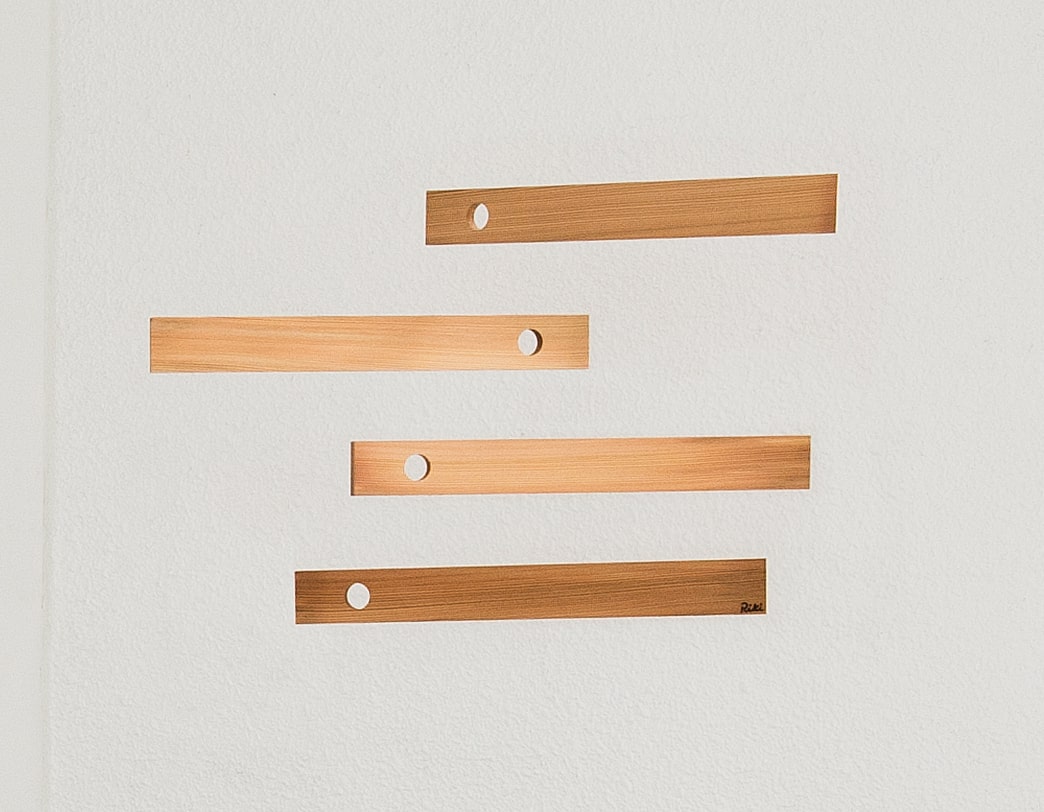
Riki Mobile MiyamaDiscontinued
Designed by Riki Watanabe / 1983
This mobile was originally designed for a Japanese restaurant in Shinjuku Keio Plaza Hotel. The design depicts a shoal of fishes swimming in the water, and we can feel Watanabe’s playful mind.
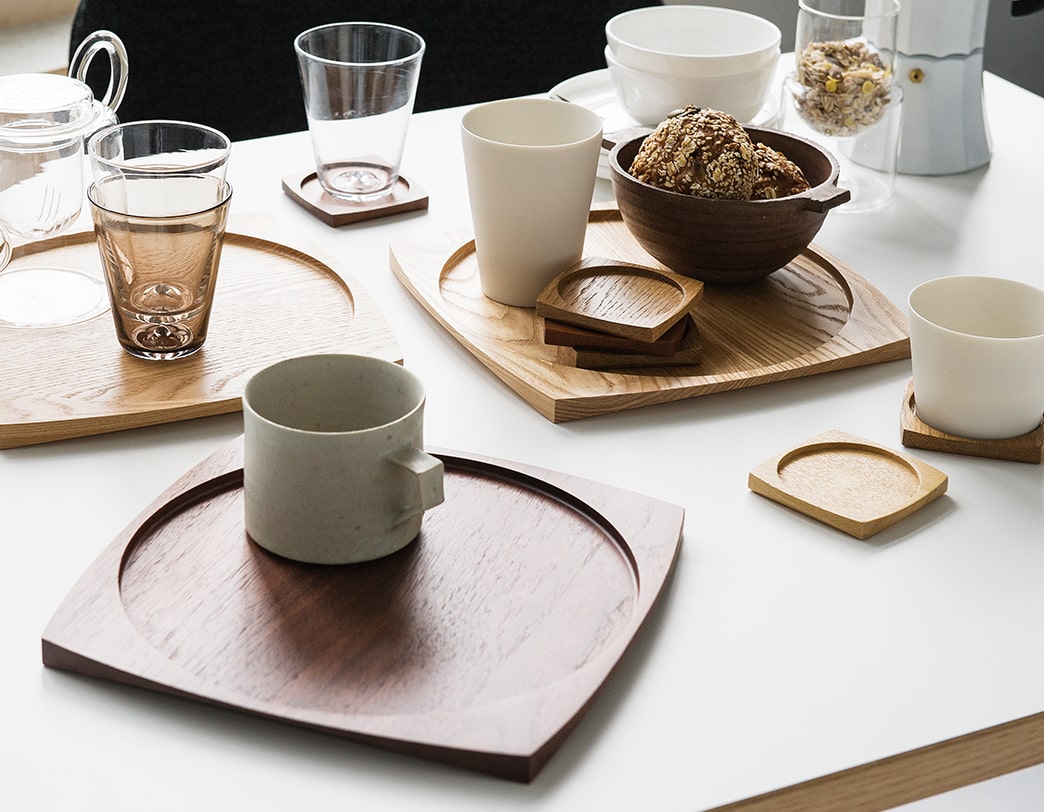
Photo Masatoshi Takahashi, Styling Yumi Nakata
Tray, CoasterDiscontinued
Designed by Daisaku Choh / 2006
Tray and coaster with a beautiful organic design created from solid, natural wood. This refined design present a mixture of softness and sharpness. Though small in size, these works express the design concepts of Daisaku Choh.

